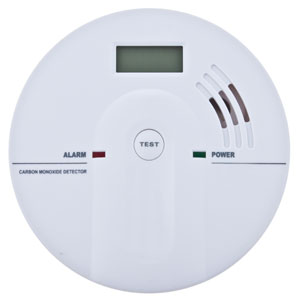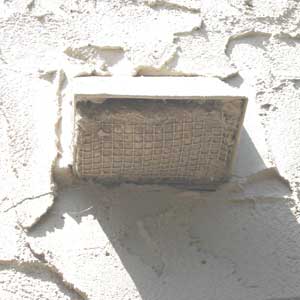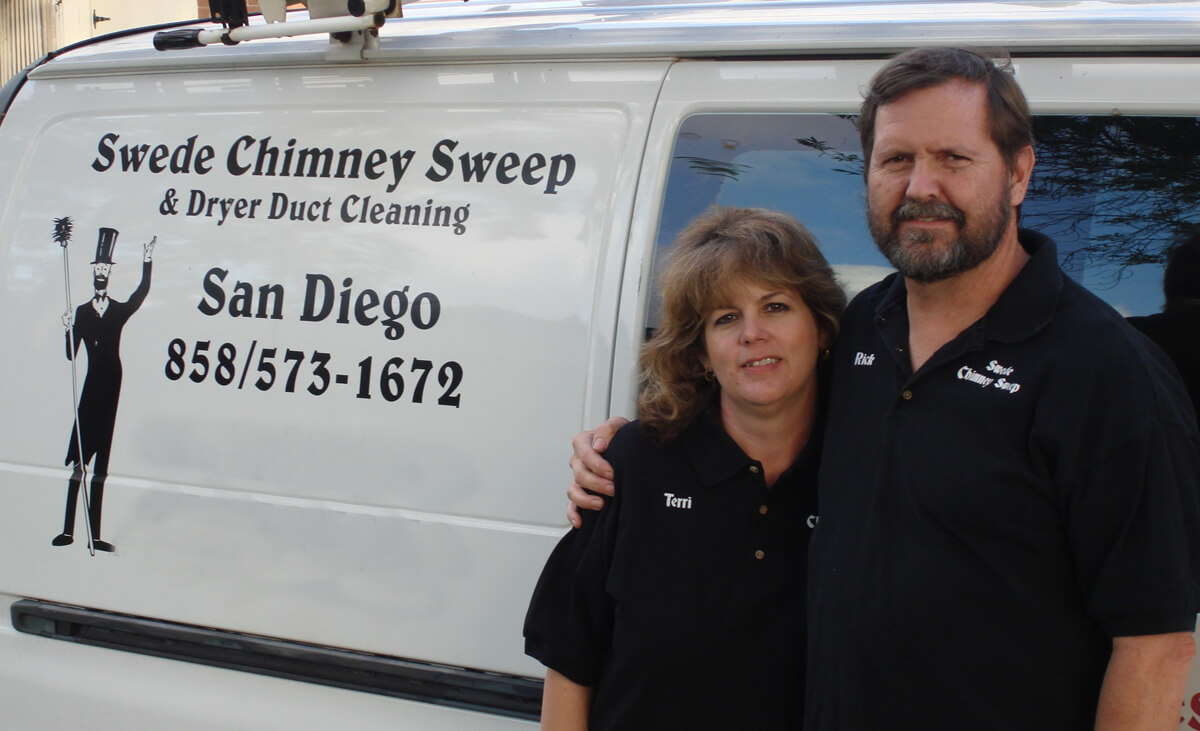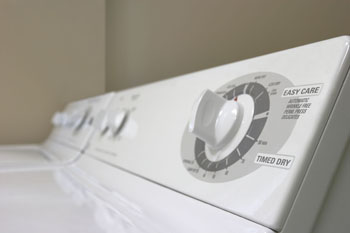 There’s nothing more annoying for a homeowner than when the clothes dryer stops working. Laundry comes to a complete standstill and there’s no place to put the basket full of sopping wet clothes. In this case, most homeowners automatically think there’s a problem with the dryer itself and so they call the appliance repair company. After several days waiting for the repairman to show up, he takes five minutes to determine that there’s nothing wrong with the dryer at all. The dryer vent is clogged. So now the homeowner has paid for a totally unnecessary expense for an appliance repair. As a Certified Dryer Exhaust Technician, I hear this story almost daily from frustrated homeowners who just want to get their laundry done.
There’s nothing more annoying for a homeowner than when the clothes dryer stops working. Laundry comes to a complete standstill and there’s no place to put the basket full of sopping wet clothes. In this case, most homeowners automatically think there’s a problem with the dryer itself and so they call the appliance repair company. After several days waiting for the repairman to show up, he takes five minutes to determine that there’s nothing wrong with the dryer at all. The dryer vent is clogged. So now the homeowner has paid for a totally unnecessary expense for an appliance repair. As a Certified Dryer Exhaust Technician, I hear this story almost daily from frustrated homeowners who just want to get their laundry done.
Another even worse scenario that we see too often: When your dryer takes too long to dry, you automatically think that the problem is with the dryer. Since the dryer is a few years old, you spend the big bucks to buy a new dryer. The new dryer is installed and, once again, takes too long to dry. You come to the frustrating realization that you just spent unnecessary money on a new dryer while throwing away a perfectly functional dryer. The dryer vent was the problem, not the dryer.
So how do you tell if your dryer vent is clogged?
1) Your clothing takes too long to dry. It should not take any longer than 45 minutes to dry an average load of laundry.
2) The Exhaust Termination (also referred to as a “Flapper,” “Wall Cap Termination” or “Roof Termination”) where the dryer exhausts to the outside doesn’t open when the dryer is on.
3) The dryer seems to be overly hot to the touch when the dryer is on. Also, the laundry room feels like a sauna when the dryer is on.
 4) In the case of a gas dryer, the carbon monoxide detector in the laundry room sounds its obnoxious alarm. Blocked or plugged up dryer vents may allow the carbon monoxide to back up into the home since the gases cannot exhaust properly. It is highly recommended to install a carbon monoxide detector in the laundry room when you have a gas dryer.
4) In the case of a gas dryer, the carbon monoxide detector in the laundry room sounds its obnoxious alarm. Blocked or plugged up dryer vents may allow the carbon monoxide to back up into the home since the gases cannot exhaust properly. It is highly recommended to install a carbon monoxide detector in the laundry room when you have a gas dryer.
5) More lint than normal appears around the dryer and in the laundry room.
6) On more sophisticated dryers, the electronic read-out will indicate that there’s an issue with the dryer vent or lint screen.
7) You notice a burning smell when the dryer is on. This is a sign of a dryer fire inside the dryer. According to the National Fire Protection Association, between 2010-2014, the U.S. fire departments estimated that there were 15,970 fires involving washers and clothes dryers, resulting in 13 deaths, 440 injuries and $230 million in property damage. The large majority of these fires were due to clothes dryers.
8) The screen that surrounds the dryer exhaust termination is plugged up.  Although the screens are useful for keeping out rodents, the screens are actually against code because they tend to plug up with lint.
Although the screens are useful for keeping out rodents, the screens are actually against code because they tend to plug up with lint.
9) Your clothes develop a musty or moldy smell.
10) Your dryer stops working. If the dryer doesn’t vent properly, the dryer overheats and will damage expensive parts in the dryer in which case you will need an appliance repairman to fix the dryer after the dryer vent cleaning.
What NOT To Do With A Dryer Vent
Some DIY’ers choose to purchase a Dryer Vent Cleaning Kit from one of the big box home improvement stores. However, because these kits are intended for dryer vent systems less than ten feet long and most homes have dryer vents far longer, using these kits actually creates a blockage, making it more difficult for a professional to remove the blockage.
Who do you call to clean a dryer vent?
Most appliance repair companies don’t touch dryer vents and most dryer vent professionals don’t fix dryers. To find a qualified Certified Dryer Exhaust Technician in your area, go to Chimney Safety Institute of America and look for a C-Det Certified Dryer Technician. Make sure that the technician uses a brushing method to scrub the vent clean and not just air pressure or vacuums which just removes the loose lint.
After the dryer vent is cleaned, you’ll be happy to get back to doing your laundry in no time!


Very helpful tips and information that everyone who owns a home should know! Dryer vent complications and fires are a big problem that people need to be aware of. Thanks for sharing
I found the blog quite fascinating to read. The essence of cleaning the dryer vent is well explained in those 10 bullet points. Now, whenever my dryer shows any of these signs, I would understand one thing. There is a severe problem with my dryer, and I need to solve it on an urgent basis!
While most articles preach about WHAT TO DO with dryer vents, i particularly liked this one for pinpointing WHAT NOT TO DO with our dryer vents. That was informative and useful! Thank you for bringing that up.
I’ve actually been having trouble getting my clothes to dry out properly. I find that I have to run them through multiple times for them to get completely dry. I’m going to check out my dryer vent. Thanks!